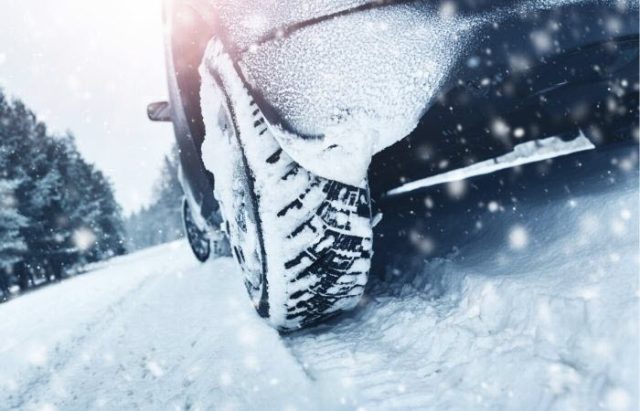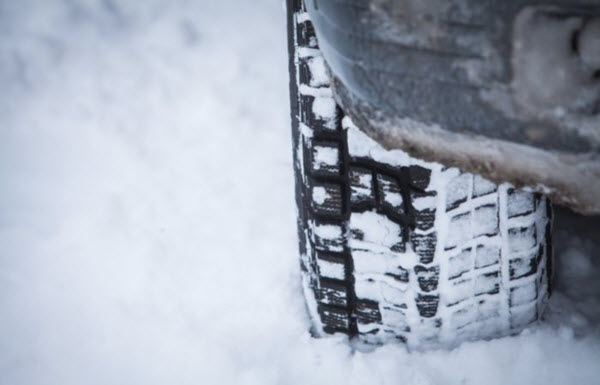Can Your Car Handle The Winter Season, Or Should You Upgrade?
By Lift Support Depot Press
January 10, 2024 • Fact checked by Dumb Little Man

Winter driving is no joke. Can your car handle it? You need to figure out what your vehicle can take before the first snowfall. No one wants to be stuck on an icy road with an automobile that’s not equipped to get them home safely.
It may be in your best interest to upgrade to something with a bit more power and traction. We can help you to decide whether to update your current car or upgrade to something new.
The Differences Between Drive Systems

It’s tempting to think that you absolutely have to have a four-wheel drive in winter. That may be true for you, but just because your current vehicle isn’t a four-wheel drive doesn’t automatically mean that you need to start shopping for something new.
There are several things to consider when you’re talking about drive systems. Your current car may simply need some extra maintenance, such as a new set of gas springs or a tire rotation. Let’s break it down to make it a bit easier to decide what to do before the snow begins to fall.
Front-Wheel Drive
You may have a front-wheel drive car. Plenty of newer models are front-wheel drive since they have their engines in the front of the car. That’s not a bad thing. A car or other vehicle with a front-wheel drive system may grip the road a bit better, which is what you want on cold or icy roads. Front-wheel drive cars are more predictable in inclement weather.
You don’t have to upgrade solely because your automobile is FWD. That being said, you still have to be careful not to lose traction. Your only option then is to pump the brakes and attempt to slow the car. If you press down on the gas, you run the risk of understeering and losing your ability to take corners.
Rear-Wheel Drive
Rear-wheel drive vehicles are somewhat more expensive than FWD. They’re also meant for more experienced drivers, at least in winter. Your RWD is fine in spring, summer, and fall, but unless you’re an expert driver, it may be too much to handle on icy surfaces.
You get terrific balance when it comes to the distribution of the front versus the rear, but although the dynamics are great, it can be hard to keep control of an RWD car. If you don’t want to face any extra challenges in the winter, then you may need to give up the rear-wheel drive in favor of something over which you have better control.
Four-Wheel Drive
Four-wheel drive may seem like a no-brainer in winter. You may even be thinking of updating your vehicle to a 4WD model. That’s understandable. Cars, SUVs, and trucks with 4WD are notoriously easy to handle on winter roads – at least, that’s the idea. The truth, however, is that you need to be somewhat experienced with a four-wheel drive model.
Drivers who don’t have experience with this drive system may not realize that you have to turn the 4WD on and off as you drive. You only want to use the 4WD on icy or wet roads. Using it on a dry road can cause significant damage to your drivetrain.
Of course, if you forget to switch it on while navigating slippery roads, then you may as well not have it at all. That’s something to think about as you consider whether to keep your current car or trade it in for something new.
All-Wheel Drive
That brings us to all-wheel drive, which is something of a foolproof drive system. Typically, all of the vehicle’s power focuses on whichever wheel has the least amount of traction. That means that if you step on the gas on an icy road, only one of the wheels will spin. No power goes to the other three wheels, which actually allows them to grip more.
The bad news is that while this can help on slippery surfaces, it won’t necessarily help you while you’re trying to drive up a hill. Still, many drivers find that all-wheel drive vehicles provide more than enough power and traction to handle winter weather.
You may simply need to upgrade your existing car with key features, even if it’s something as small as putting chains on your wheels or switching out for winter tires before you head out on a trip.
The Need For Traction Control
How is the traction control in your current car? It’s worth checking before the winter sets in. Traction control is quite similar to all-wheel drive in that it stops power from reaching the wheels. That may seem counterintuitive, but this maneuver can keep you from sliding along the road or spinning out of control, which is a worry anytime you go overboard with the throttle.
Most modern vehicles have traction control as a safety feature, but it’s still a good idea to check yours before you need it. Bear in mind that traction control is only supposed to work when you’re accelerating. Its main aim is to slow you down and keep you out of the spin.
The Importance Of Anti-Lock Brakes
Anti-lock brakes are another standard safety feature. If your car isn’t that old, then it likely came with an anti-lock brake system or ABS. This system can come in handy in winter, when standard brakes require a light, practiced touch.
Not everyone understands the importance of pumping the brakes rather than tapping them on icy surfaces. ABS will pulse the brakes in your vehicle. That causes the wheels to lock and then unlock quickly. It allows you to continue steering while maintaining control on inclement roads.
The key is to step down on your brakes, applying as much pressure as possible, and don’t let up. While the brakes are engaged, you should steer around any obstacles in front of you as you wait for the car to stop completely.
If your brakes need work before winter, jump on that and get them fixed. Make sure that you check the response of your anti-lock brake system as well. If you need a complete overhaul, then you may decide that the best option is to upgrade to a new vehicle for the season.
Staying Stable
Your stability control is directly related to your anti-lock brake system. In fact, stability control works through your ABS. Out of all your safety features, it may be the one thing that prevents you from totaling your car.
It judges the speeds of each wheel individually to figure out if you’re in danger of sliding or spinning. Once it makes a determination, the stability control will apply the vehicle’s calipers as necessary. It can keep you from crashing when the roads are icy.
Winter-Ready Tires

You may not want to upgrade your car simply because your wheels are in bad shape—and there’s absolutely no reason to do so. You can upgrade your tires instead. That may involve buying all new tires, rotating your tires, or applying chains. Use your own winter know-how to determine what you need to do or, if you’re unsure, talk to a mechanic you trust.
Weight in Winter
Heavier vehicles do better on winter roads. A lightweight car may not possess the traction necessary to stop you when you hit a patch of ice. If you live in an area that experiences serious winter weather, then it may be time to trade in your lightweight car. You can also save it for spring and summer and buy something else to see you through the winter.
Is your car ready for inclement winter weather? Let us know if you need to upgrade or if your vehicle can tackle the slippery roads like a beast.
Lift Support Depot Press
Jordan McDowell is a writer and automotive enthusiast. He specializes in content that helps car and truck owners get the most from their vehicles through aftermarket upgrades. He works closely with Lift Support Depot, online shop with the world's largest selection of lift supports, lift struts, gas springs, and gas struts for every application.


